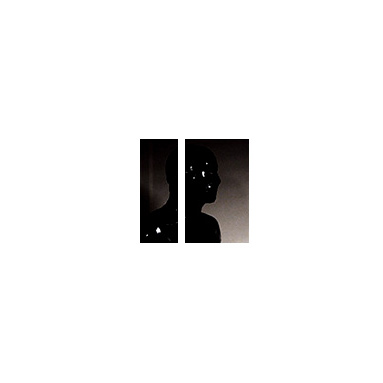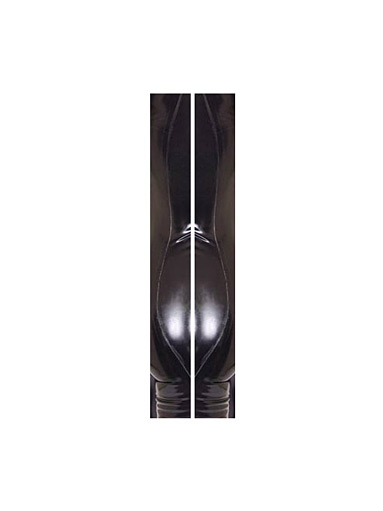Recently I came across a twelve-part essay on fashion by a French novelist and intellectual. It was a predictably tweedy take on the act of getting dressed: dry, humorless, and smelling faintly of rumpled wool. The intellectual railed at the bored tastemakers, the cruel style arbiters, and the coercive economic-driven creations of desire. He wasn’t wrong, not really. But the argument felt stale. I couldn’t help feeling that I’d read it before, and that I wanted a fresher set of thoughts.
We read this kind of criticism all the time; it is both correct and uninspiring. It needn’t have given me pause, except the intellectual seemed troubled, too. In the essay’s closing passages, he tried to imagine another way to talk about sartorial rituals and admitted—almost plaintively—that he wished he’d written something else.
He didn’t, though. I am less interested in speculating why than in dressing up his tweedy essay in something a little more dynamic. I want to know if it can be made new, and I think I have just the garment: a latex bodysuit, given me by a good friend a few weeks ago. In my short experience with the suit, it has proven anything but stale. It would look terrible on the intellectual. But I think it might flatter his essay—lending its twelve-part body a fresh latex skin—even if at first the material seems ill-chosen, the fit awkward and strange.

1. Transformation
A latex bodysuit asks its wearer for perseverance. It is not a garment thrown on in a groggy morning daze. The suit must be powdered, your skin should be lubed, and still the process does not usually go smoothly. The rubber pulls your skin in every wrong direction. It enumerates your drynesses. You get pinched and twisted and look, on inspection in the mirror, as though you’re wearing a well-tailored tire.
So you shine the suit with a lintless rag and silicone polish. You have to be patient because latex doesn’t reveal itself quickly. You buff your arms, and buff your legs; you run the rag over your ribs and hips. And finally, slowly, the suit admits its sheen: velvet, metal, and a liquid hint of risk.
2. Possibility
You’re rewarded with a set of alien yous: an eel, a chunk of onyx, oil bubbling in the earth’s core. It is invigorating to feel yourself so multiplied.
3. Limits
Of course, the suit is also about sex. My friend wore it when she worked as a dominatrix. Before that it came from a fetish shop called The Baroness and before that from a stock of well-established cultural fantasy. Personally, I don’t think about sex while I’m wearing my suit. I am not a dominatrix or a baroness. My kind of sex clothes itself differently. My latexed body feels very distant from any question of desire.
4. Science & 5. Limits 2
I am probably naïve to think I escape the suit’s associations. I heard about a study where two groups of participants wore white coats while completing logic puzzles. One group was told their coats belonged to doctors, the other, to painters. The doctor-coated group answered their puzzles far more successfully. They were feeling smart, apparently.
I design my own experiments inspired by the study. I make plans to wear the suit unsexy places—the bus, the supermarket, my parents’ house—to see if I can alter its meaning. I am daunted and never do. It feels like a doomed venture. My reluctance is not a failure, I don’t think, just an alternate data-set. Another way of answering my question, producing a straightforward set of findings. I do not get dressed in a vacuum, for better or worse.

6. Facts
Still, there are facts like these:
An altered posture
An abbreviated range of motion
The squeak of latex against latex
The body’s smell when the suit is peeled off, a blend of plastic, barn, and sewer
And facts don’t always mean much. They’re not always systematizable.
7. Relationships
My friend and I are friends for many reasons, but one of the most important is that we share a favorite author. This author once wrote a newspaper column about a fuzzy red sweater given her by an admiring reader. The sweater “embodies all that is good for both of us,” she swore; it offered protection from “the wintery cold outside: the real cold as well as those other chills we experience.”
Latex is not by nature a sentimental material. But we need objects to ground our emotional connections. When I wear my friend’s gift I know exactly what our author was talking about. The suit is a site of refuge, a meeting place for our gestures of mutual care. I am not by nature a sentimental person but can’t deny, in this most unlikely of garments, the presence of something fuzzy and warm.
8. Trauma
My suit has a scar, a sad puckering along its thigh. I ripped it in a moment of carelessness, and though I did my best to close the gash, the suit has never been the same. I flinch each time I see it, as though the injury were my own. In a sense, it is. Yet another entry in a personal history of clothing rent, soiled, and ruined. My inevitable closet-archive of the way things unravel and the meanness of change.
9. Origins
I choose to imagine that the suit’s rubber came from a tree on an idyllic jungle plot. It’s far more likely that the rubber is synthetic, born of some chemical compound with an unpronounceable name. I blunder through their syllables—polysiloxanes and carboxy monomers—looking for the least foreign among them. But they refuse to be recognized. The latex won’t tell me where it’s from.

10. Personalities & 11. Relationships 2
Is it any wonder that the suit has preferences I don’t understand? It insists on being stored in the dark. It abides only a narrow range of temperatures. It demands to be packed meticulously in talc. My suit has a finicky temperament, and this is where problems arise.
Because I am never so exacting. I am good at being adaptable. In dealing with the bodysuit I have to call on my maturest self and most elastic sense of empathy. That is the delicate work of bonding across sensibilities. I can’t say it’s always fun.
12. Praxis
In the end I’m after a more fundamental sort of dress-up: a flexibility of thought, a love for new logics, a willingness to shed one’s familiar theoretical skins. I’m after an intellectual practice that exists in smart, embodied flux, a mode of thinking nurtured deliberately in words and bodies and gestures and objects. I am wondering how one truly wears an idea, for reasons more compelling than old tweedy habit.
